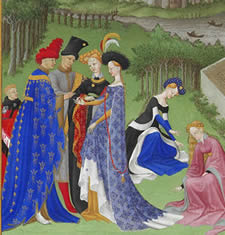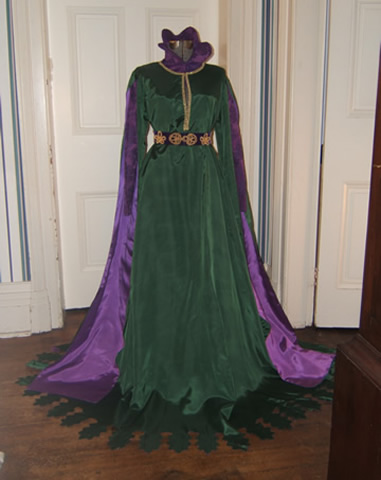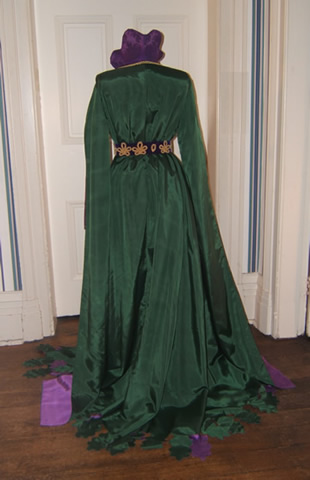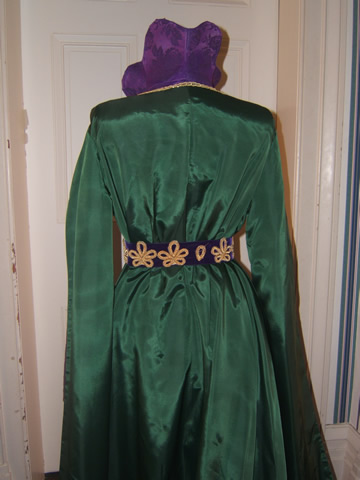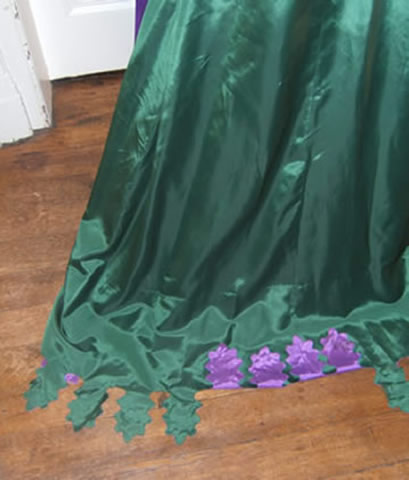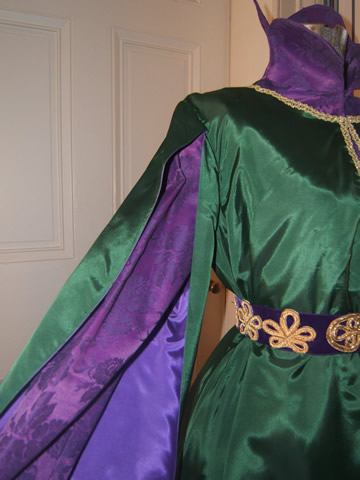

Main Menu
Portfolio Main Menu
Medieval
18th Century
Regency
Romantic
Antebellum/Civil War
Late Victorian
Edwardian
Underpinnings
Millinery
Medieval Era Menu
This site is no longer being updated - Go to NEW Site!
Most historians date the medival period, or the middle ages, from the fall of the Roman Empire during the 400's until the beginnings of the Renaissance in the early 1500's. This is a rather wide span of time for considering clothing style changes. In Great Brittan the period between the 400's and 1066 (the Normal Invasion) is referred to as the Anglo Saxon period. This limits the middle ages to the period from 1066 through the ascention of the first Tudor king (Henry VII) in 1485.
There were many innovations to clothing during this period, many of which were a direct result of The Crusades. Not many people know that this is how the button was introduced to European society! During this period clothing transitioned from the draped clothing and tunics of the late Roman Empire and Byzantine times to styles that more closely fitted the body. It was the beginning of tailoring. Clothing fastened either with the new fangled button or lacing - often called "points".

